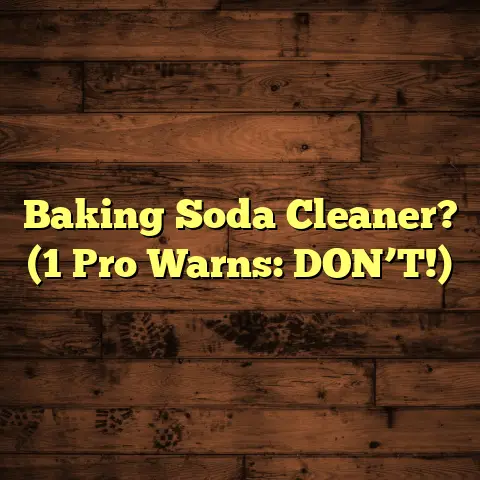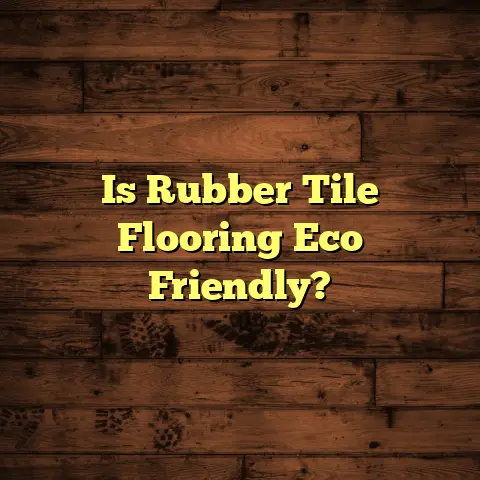Baby Play Mats: Comfort & Safety? (5 Risks Exposed!)
Ever picture your little one nestled on a cozy blanket, exploring the world? That’s the idea behind baby play mats!
They’re designed to be warm, inviting spaces for infants to learn and grow. But like any product, not all play mats are created equal.
Some can even pose hidden risks. As a flooring contractor, I’ve seen it all, from safe surfaces to potential hazards. Let’s dive in and uncover what you need to know!
The Importance of Play Mats
in Early Development
Play mats are more than just comfy spots; they’re mini gyms and classrooms for your baby! Think of it this way:
And they’re crucial for developing motor skills like crawling and rolling. Did you know experts recommend at least 20-30 minutes of tummy time daily for optimal development?
A good play mat makes that time more enjoyable and productive. It’s like creating a dedicated learning zone right in your living room!
Understanding Comfort
in Baby Play Mats
What makes a play mat “comfortable”? It’s not just about feeling soft. It’s a combination of factors like:
- Materials: Foam, fabric, or a mix of both?
- Thickness: How much cushioning does it provide?
- Texture: Is it smooth, bumpy, or a combination?
I’ve seen mats made from everything from basic EVA foam to organic cotton. Foam mats are easy to clean and offer good cushioning.
Fabric mats are often softer but can be harder to keep clean. A comfortable mat can significantly impact a baby’s mood.
Think about it: if they’re comfortable and supported, they’re more likely to engage in playtime. A happy baby means a happy parent, right?
Safety Standards and Regulations
Safety is paramount when it comes to baby products. Luckily, there are standards and certifications to look for.
In the US, the ASTM (American Society for Testing and Materials) sets safety standards for play mats. In Europe, it’s the EN71 standard.
These standards cover things like chemical content, flammability, and small parts that could be choking hazards. Certifications like Oeko-Tex Standard 100 ensure that the materials are free from harmful substances.
When shopping, look for these certifications. Also, check for features like:
- Non-slip surfaces: To prevent sliding on hard floors.
- BPA-free materials: BPA is a chemical found in some plastics that can be harmful.
- No small parts: To eliminate choking hazards.
Don’t be afraid to ask questions and do your research. A little extra effort can go a long way in ensuring your baby’s safety.
Exposing the Risks:
The Five Major Risks of Baby Play Mats
Okay, let’s get to the nitty-gritty. While play mats offer many benefits, they also come with potential risks. I’ve seen these issues firsthand, and I want to make sure you’re aware of them.
Risk 1: Chemical Exposure
This is a big one. Some play mats, especially cheaper ones, may contain harmful chemicals like phthalates, formaldehyde, and VOCs (volatile organic compounds).
Phthalates are used to soften plastics, but they’ve been linked to hormone disruption. Formaldehyde is a known carcinogen. VOCs can cause respiratory irritation and other health problems.
A 2014 study by the Ecology Center found that many children’s products, including play mats, contained these chemicals. Look for mats that are labeled “BPA-free,” “phthalate-free,” and “low-VOC.”
Consider mats made from natural materials like organic cotton or natural rubber. It’s worth the extra cost for peace of mind.
Risk 2: Slips and Falls
You’d think a play mat would prevent falls, but some materials can actually make them more likely. Smooth foam surfaces can be slippery, especially for babies who are just learning to crawl or stand.
I’ve seen cases where babies have slipped and bumped their heads on hard floors despite being on a play mat. Look for mats with a textured surface or a non-slip backing.
You can also place the mat on a rug or carpet for added traction. According to the CDC, falls are a leading cause of injury for young children.
Taking steps to prevent slips on the play mat can help reduce that risk. Trust me, a little extra grip can make a big difference.
Risk 3: Allergens and Irritants
Babies have sensitive skin, so it’s important to consider potential allergens. Some materials, like synthetic fabrics, can irritate their skin.
Dust mites can also accumulate in play mats, triggering allergies. Mold can grow in damp environments, especially if the mat isn’t properly cleaned.
I recommend choosing hypoallergenic materials like organic cotton or bamboo. Regularly vacuum or wipe down the play mat to remove dust and allergens.
If your baby has known allergies, be extra cautious and consult with your pediatrician. A simple switch to a different material can make a world of difference.
Risk 4: Suffocation Hazards
This is a scary one, but it’s important to be aware of. Poorly designed mats with loose parts or thick, soft padding can pose a suffocation risk.
Small pieces can detach and become choking hazards. Thick padding can conform to a baby’s face, making it hard to breathe. Always supervise your baby while they’re on the play mat.
Avoid mats with small, detachable parts. Choose mats with firm, breathable padding. Make sure the mat is large enough that your baby can’t roll off the edge.
The Consumer Product Safety Commission (CPSC) has recalled several play mats due to suffocation hazards. Stay informed about recalls and choose products from reputable brands.
Risk 5: Lack of Durability
A play mat is an investment, and you want it to last. But some low-quality mats wear down quickly. The foam can tear, the colors can fade, and the surface can become damaged.
This not only looks bad but can also create safety hazards. Torn foam can be a choking hazard. Faded colors may indicate that the dyes are leaching out.
I always advise investing in a durable play mat that can withstand wear and tear. Look for mats with reinforced edges and high-quality materials.
Read reviews and choose a brand that is known for its durability. A well-made mat will last longer and provide a safer play environment for your baby.
Conclusion
Choosing a baby play mat is a balancing act. You want something comfortable and engaging, but you also need to prioritize safety. By understanding the potential risks and taking steps to mitigate them, you can create a safe and stimulating play environment for your little one.
Remember to look for safety certifications, choose durable materials, and supervise your baby during playtime. A little research and caution can go a long way in ensuring your baby’s well-being.
So, take your time, do your homework, and choose a play mat that you can trust. Your baby will thank you for it! Happy playing!





